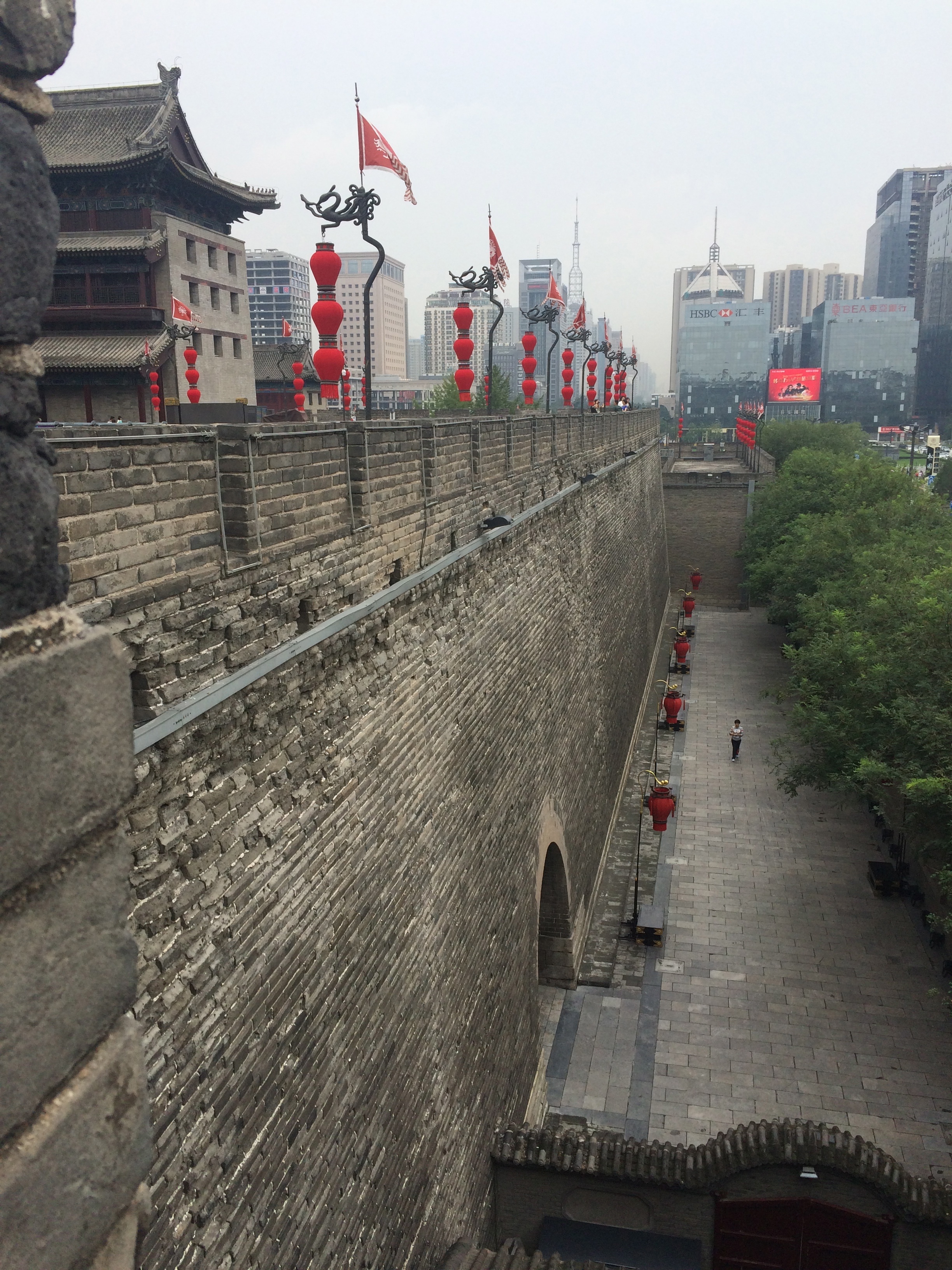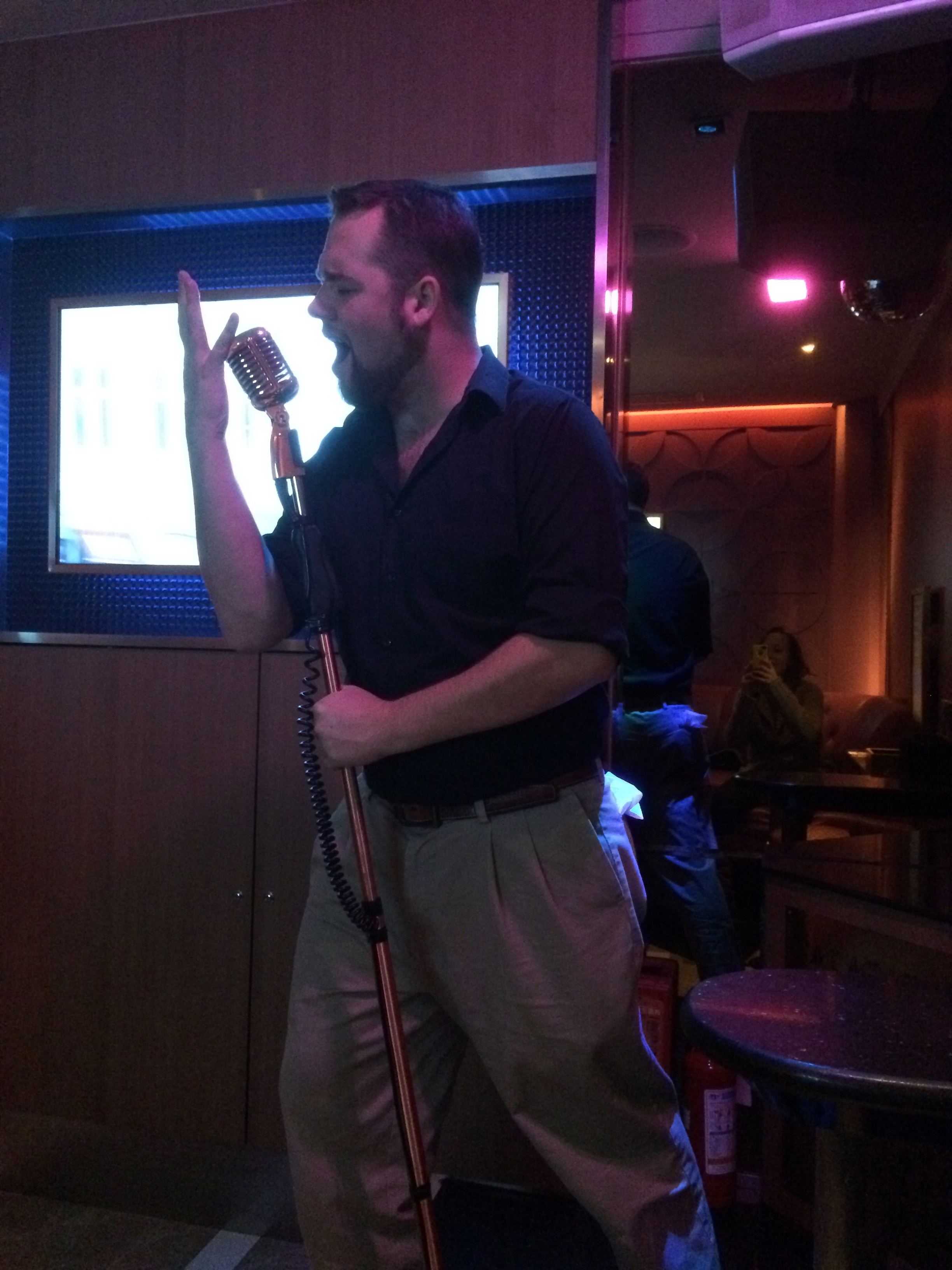The Terracotta Warriors
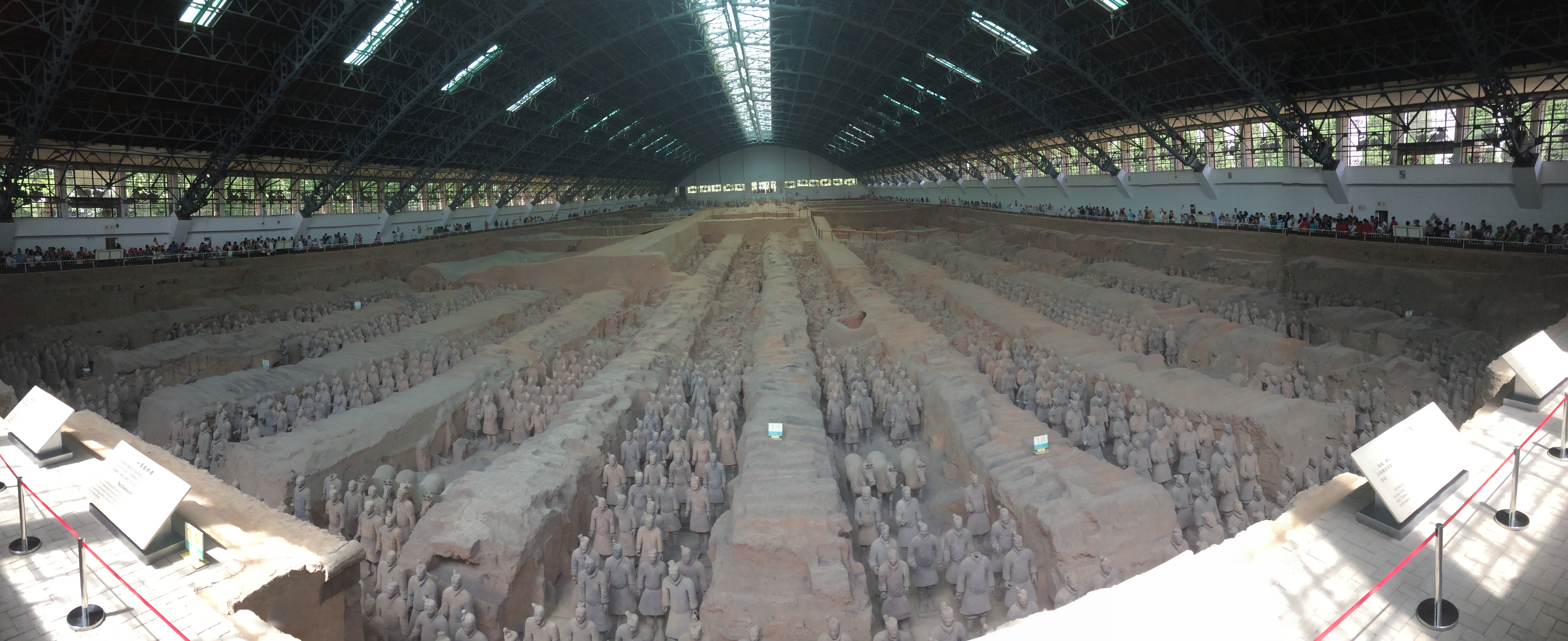
After ten months of living in Xi'an, we finally did what tourists do and visited the most famous cultural site: the Terracotta Warriors. Were we impressed? Sure. Were we more happy to find the place not too crowded? Absolutely (how very un-China). Even though we knew what we were going into, we still enjoyed ourselves at the Terracotta Warrior exhibit.
The What, How, And Why
The Terracotta Army was originally constructed in 246 - 206 BCE to accompany China's first Emperor's, Qin Shi Huang's, tomb. The emperor wanted a replica of the army that served him during his reign to serve him in the afterlife, so he ordered soldiers, chariots, and horses to be built.
To complete this epic shrine, over 700,000 people worked around the clock for approximately 40 years.
What's even more incredible is that all of the statues were made entirely by hand, and no single statue is alike. Artisans would start constructing a warrior by molding the head, torso, arms, hands, and legs from clay, separately. Once everything was assembled together, the artisan would carve details into the statue, such as facial features, hairstyles, and armor details. The warrior would then be fired in a kiln and painted with bright colors.
That's some serious man labor.
The Discovery
Probably the coolest fact about the Terracotta Warriors is the story behind their discovery.
In 1974 (nearly 2,200 years after the terracotta soldiers were built) a local farmer was digging a well in Xi'an and discovered the soldiers. Could you imagine? You're just out on your farm one day, digging and digging, and then *clunk* — your shovel hits a warrior's face, staring up at you from the dirt.
It's truly a magnificent discovery, one that has been described as the "Eighth Wonder of the World."
Since its discovery, over 8,000 soldiers, 130 chariots, and 670 horses have been uncovered.
More recently, terracotta musicians, acrobats, and concubines have also been found, as well as a variety of birds, such as waterfowl, cranes, and ducks.
Even today, the exhibit remains an active archaeological dig site. Emperor Qin Shi Huang's tomb is believed to cover 56 square kilometers, and most of it remains unearthed. The excavation and restoration of the terracotta figures is an ongoing project.
The Terracotta Army Museum
Located about 40 minutes outside of the main city of Xi'an in Lintong, the Terracotta Army Museum consists of three pits, in addition to the Exhibition Hall of the Bronze Chariots.
Our fellow teacher and American friend, Dylan, showed us the way, along with his family who was visiting from the States. Dylan lives in Lintong and had been to the museum two times before, so he was our official tour guide. We were lucky to have him.
The pits (or "vaults") are arranged in adherence to the ancient Chinese concept of war: facing east towards the ancient enemies of the Qin State, with Pit One on the right flank, Pit Two on the left flank, and Pit Three situated in a command post at the rear. Pretty cool.
Pit One
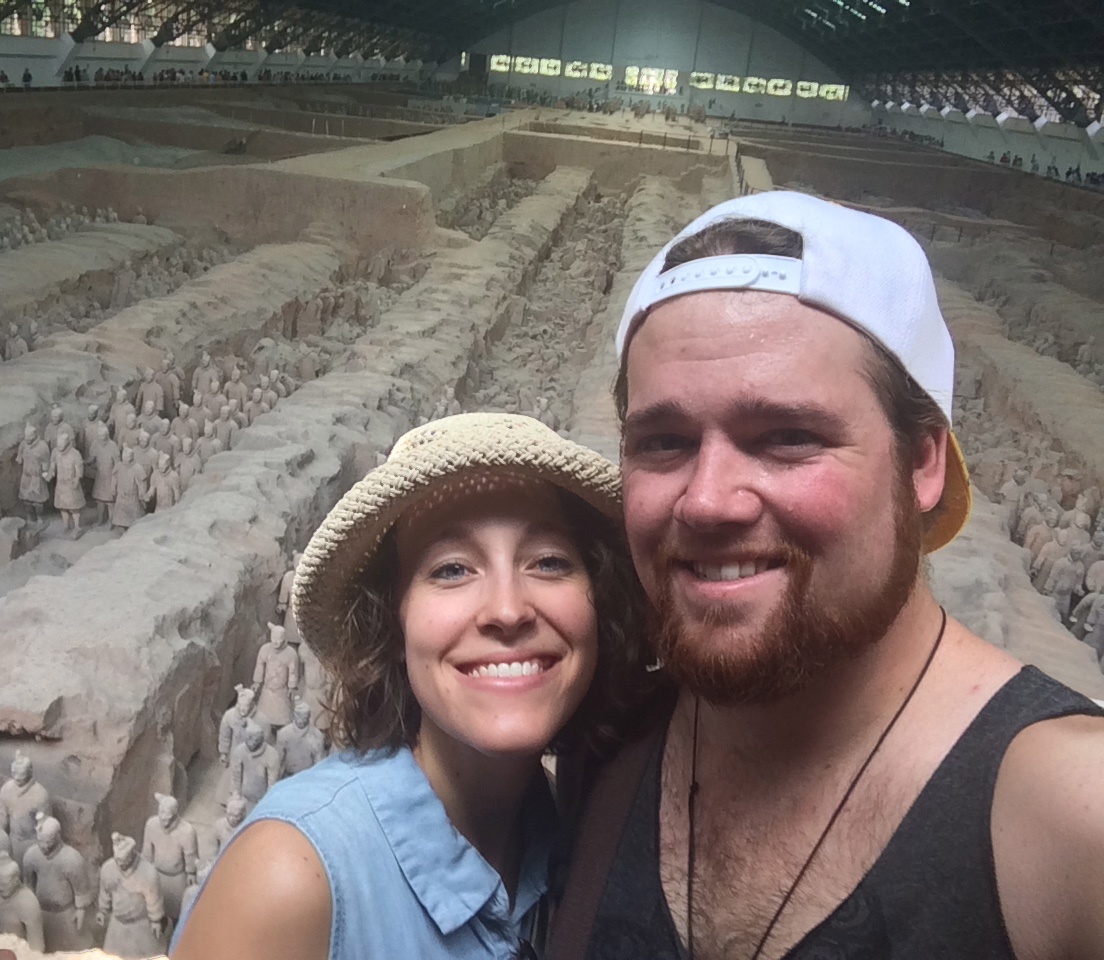
We started at Pit One, which is the largest of the three pits at about the size of an airplane hanger. With over 2,000 warriors on display, it's surely the most impressive, too. All the soldiers and horses face east in rectangular groupings, and they are all armed.
In the center of the army is a large group of armed soldiers, accompanied by horse-driven carriages.
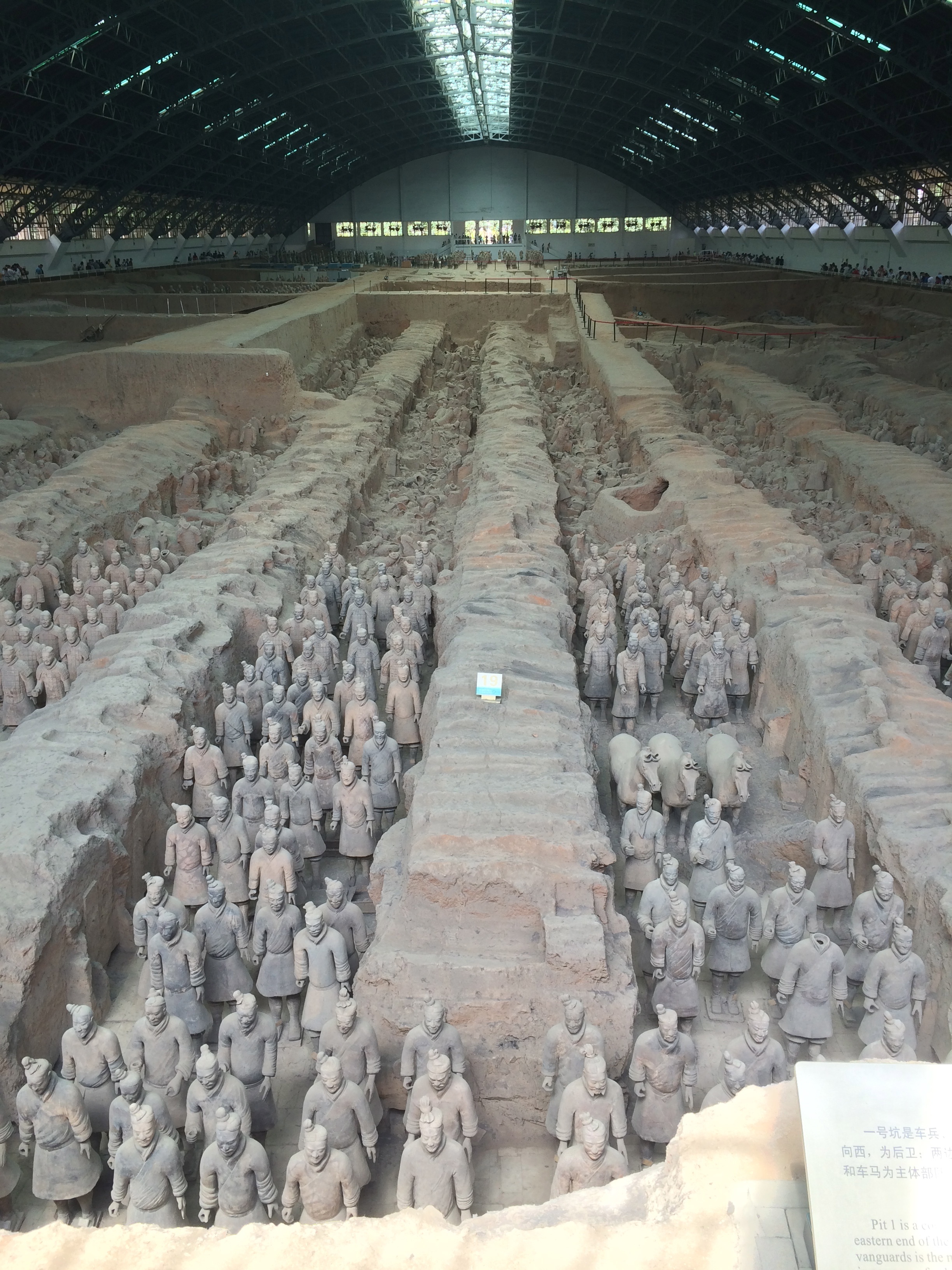
The detail, along with the sheer magnitude of the warriors were what stood out to me the most. Every single warrior's face was different— every hairstyle, every facial expression, every hand placement. Even the horses varied slightly in appearance. It was an incredible feat of craftsmanship, especially for being 2,200 years old.
Pit Two
While much smaller than the first pit, Pit Two was equally as interesting. Artifacts are still being unearthed here, so it was neat to see all the tools, sheets, and materials set off to the side of the artifacts that were already on display.
Due to the fact that it's under current excavation, the entire tomb is dimly lit. No natural light is allowed in, so as to preserve the excavation site.
There are four distinct units in Pit Two. The first shows an army of kneeling archers without their weapons; the second consists of unearthed chariots; the third is similar to the warriors in Pit One with a variety of warriors standing in a rectangular aligned fashion; the fourth includes many soldiers "holding" weapons (still no actual weapons in this one).
Pit Three
Pit Three is the smallest of the others and contains only 68 figures. Most of them are without heads and dismembered across the pit.
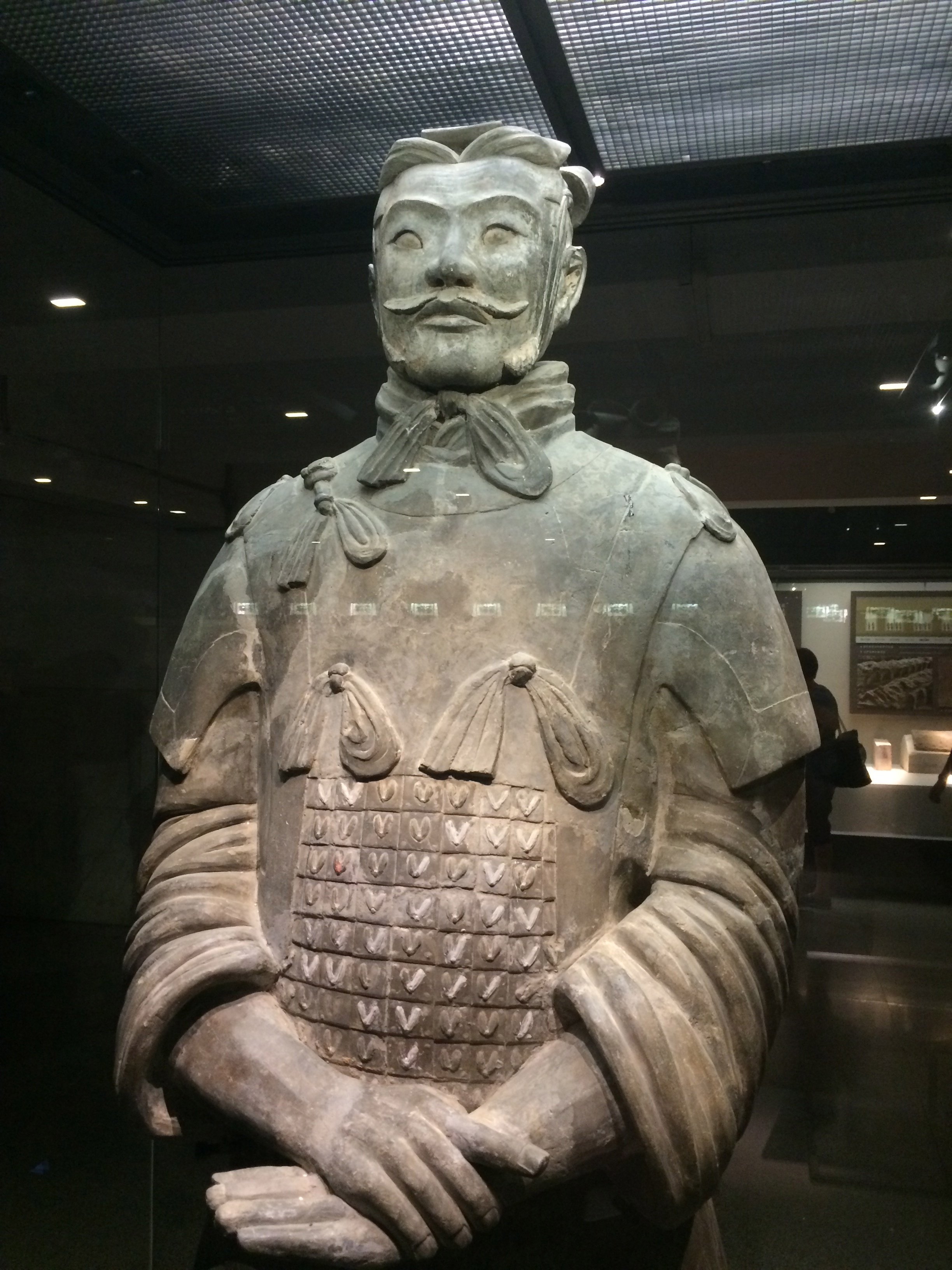
Here, individual Terracotta soldiers are on display. There is a traditional kneeling archer, a lower ranking officer (most likely a lieutenant), and one of the seven generals of the Terracotta Army.
The Exhibition of Bronze Chariots
This beautiful exhibition hall showcases the bronze chariots and horses of the Terracotta Army. They are made mainly of bronze, with the exception of almost 2,000 gold and silver ornaments that can be seen on each carriage.
These bronze carriages were so well-made that they are considered some of the best-preserved in China. In fact, the chariots are the biggest pieces of ancient bronze ware found in the world.
The exhibition also displays a historical timeline of the terracotta excavation, as well as the numerous awards the site has received across the world.
Final Thoughts
Despite hearing, reading, and researching so much about the Terracotta Warriors, it was really an incredible artistic and historical display to see in-person. The idea that over 2,000 years ago the clay soldiers were created, and now, thousands of years later, they are being reconstructed, is a very impressive cultural endeavor.
We had become a bit jaded walking around Xi'an and seeing all the faux Terracotta Warriors, pictures, and advertisements. But, when you actually get the chance to stand in front of them and think about how many people and how much energy it took to create this monument, it truly is an incredible site.
If you ever make it to Xi'an, the Terracotta Warriors are definitely an obligation. It's just something you have to do.
I mean, wouldn't you want to be buried with 10,000 clay soldiers?

